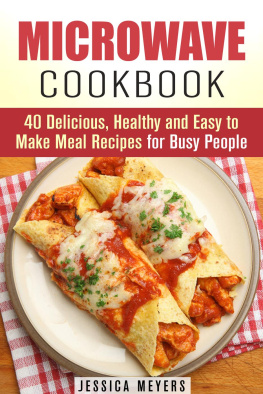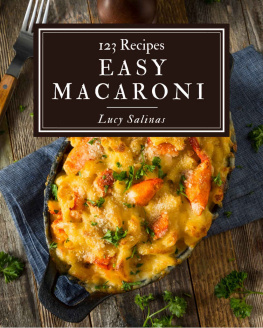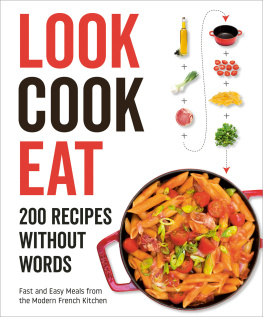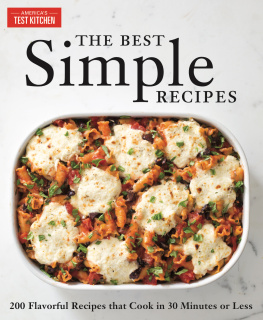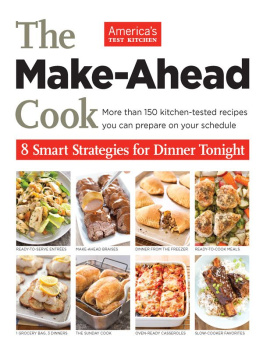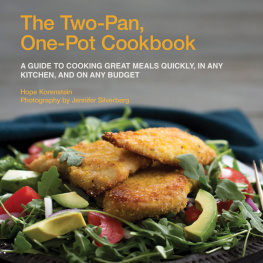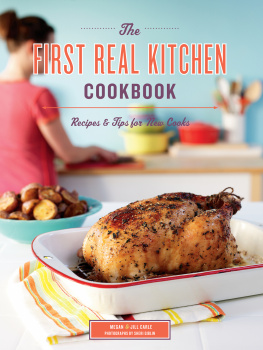HELP! Theres a
STOVE in my KITCHEN
ANNABEL FREREACKNOWLEDGEMENTS
In helping you to become a culinary success, besides easy and delicious recipes, I have included my secrets to achieving tasty food, as well as useful tips on how to save time and money on household basics the buzz being on going green wherever possible. Its worth your while to read the suggestions given on how to reduce your electricity usage and costs, as every amp counts. The sections on washing up and stain removal will save you hours of manual labour and a lot of money. You wont have to throw away that burnt saucepan, as help is at hand to revive it! Thanks go to my family and friends, who have been ardent supporters of my culinary experiments. Friends, especially Ianthe, have helpfully given me ideas that have been put to good use in this book. My husband Martin has encouraged me to pursue this interest.
Our daughters, Georgina and Victoria, have been enthusiastic with their requests for breakfast, lunch and supper, and have introduced many of their friends to my cooking. They now want the recipes, so here they are, available to everyone to enjoy! ANNABEL FRERE Published in print in 2011 by Struik Lifestyle
(an imprint of Random House Struik (Pty) Ltd)
Company Reg. No. 1966/003153/07
Wembley Square, First Floor, Solan Road, Gardens, Cape Town 8001
PO Box 1144, Cape Town, 8000, South Africa
This ebook edition published in 2012 Copyright in published edition: Random House Struik (Pty) Ltd 2011
Copyright in text: Annabel Frere 2011
Copyright in photographs: Random House Struik (Pty) Ltd 2011 All rights reserved. No part of this publication may be reproduced, stored in a retrieval system or transmitted, in any form or by any means, electronic, mechanical, photocopying, recording or otherwise, without the prior written permission of the publishers and the copyright holders. PUBLISHER: Linda de Villiers
MANAGING EDITOR: Cecilia Barfield
EDITOR AND INDEXER: Bronwen Leak
DESIGNER: Beverley Dodd
PHOTOGRAPHER: Warren Heath
FOOD STYLIST: Lisa Clark
FOOD STYLISTS ASSISTANT: Sarah Dall
PROOFREADER: Gill Gordon Print ISBN 978-1-77007-937-3
Epub ISBN 978-1-43170-214-5
PDF ISBN 978-1-43170-215-2

Over 40 000 unique African images available to purchase from our image bank at www.imagesofafrica.co.za
USEFUL INFORMATION
MEASUREMENTS
To make life simpler, all you need for measuring quantities in this book are:
1 cup = 250 ml1 Tbsp = 15 ml1 tsp = 5 mlCHECK THE WEIGHTS OF: meat, shown on the shop packaging; vegetables, either shown on the packet or weighed in the shop before buying; pasta, which usually comes in 500 g packets, ideal for about 6 people; and butter, which is normally available in 250 g or 500 g slabs.
In general, when doubling quantities, do not double the oil/butter content in the recipes.
SAVING ENERGY IN THE HOME
IN GENERAL Check your appliance if its over 1 kW then it is hungry for electricity. Use it sparingly. Avoid leaving appliances on standby mode this uses up more electricity than you think. In some households, it can cost an enormous 7 000 electricity units a year. So switch off battery chargers, cellphone chargers, microwaves, computers, TVs, DVD players, decoders, hi-fis, game consoles, rechargeable toothbrushes, etc.
However, note that there are some appliances that do need to be powered all the time, such as home-security systems, remote-controlled gates and garage doors. IN THE KITCHENCooking Kettles use a lot of electricity. Save money by putting boiled water into a thermos flask for use later and only boil as much water as you need filling the kettle wastes electricity. However, do use a kettle to boil water for cooking, as it is quicker and uses less energy than a pot on the stove. If your stove retains heat well, switch it off before you finish cooking. Also, match the size of the pan or pot with the size of the stove plate where possible.
Use a microwave to cook, as it is quicker and cheaper. One oven uses the same power as approximately 18 microwaves. Check your oven temperature with an oven thermometer older ovens are often too hot (and will ruin your baking!). Dont open the oven door when roasting or baking. Cut food into smaller portions before cooking to help it cook faster. Make your toast in a toaster, not under the grill.
Boil a variety of vegetables in one pot to save energy and washing up. Roast meat and vegetables at the same time to make the most of your oven. How about a barbecue or a candlelight dinner? Fridge Turn down the thermostat on your fridge if its very high. Dont open the door unnecessarily. When you open your fridge door for more than a moment, it loses cold air and uses a lot of electricity to cool down again. So be quick and dont let all that cold air out.
Defrost your freezer regularly. To defrost food, move it from the freezer to the fridge for a few hours instead of using the microwave. Do not place hot food in the fridge or the deep freeze. Let it cool down first. Ensure that fridge-door seals are in good condition. Washing To save hot water, rinse dishes under the cold tap before putting them into warm soapy water.
Whenever you use your dishwasher, its the same as switching on about 120 energy-saving lights, so only use it when there is a full load. Use the economy/30-minute programme whenever possible. Keep the filter of your dishwasher clean. The same applies to washing machines, so only run the machine with a full load and use the 30-minute programme whenever possible. If the weather is good, dry the clothes on a washing line outside. LIGHTS In many homes, lighting accounts for 1720 per cent of the electricity bill. LIGHTS In many homes, lighting accounts for 1720 per cent of the electricity bill.
Use energy-saving bulbs (compact fluorescent lamps or CFLs). They use 80 per cent less electricity than ordinary bulbs and last 68 times longer. When no one is in the room, switch off the lights. Use lighter lampshades for brighter lighting. Avoid leaving spotlights on for too long, as they use more electricity than other bulbs. IN THE BATHROOM Water heating accounts for 3050 per cent of the electricity consumed by an average household.
Shower instead of bathing, as a shower uses much less water and, therefore, less electricity. Save singing for after your shower! Evidence suggests that you spend longer in the shower if you sing! A geyser (boiler) blanket will insulate your geyser, preventing heat from escaping. Turn the geysers thermostat down to 60 C. Fix any dripping taps, especially hot water taps. THE SWIMMING POOL The swimming pool filter pump is one of the largest consumers of electricity, so reduce the time you operate your pool pump. During winter, you can use the pool filter even less (once every few days), as algae growth is limited.
Cover your pool it keeps it cleaner, requiring the filter to run less often. 


